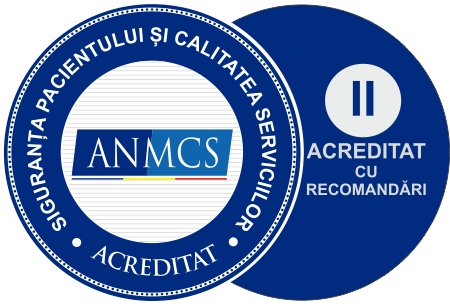What Is Anal Cancer?
For quite some time, anal canal cancer (rectal cancer) was not regarded as an individual pathology, but it was seen, instead, as a form of rectal cancer. The term of anal canal was coined in Paris in 1955, upon the adoption of the new anatomical nomenclature – Paris Nomina Anatomica (PNA). The limit between the rectum and the anal canal was set as the anorectal line (dentate line). Thus, the anatomical anal canal is located between the dentate line proximally and the anocutaneous line distally. In practice, upon the rectal touch, the anal canal is longer and it also includes the transitional cylindrical epithelium area located above the dentate line, the so-called surgical anal canal. The surgical anal canal is the predilect anal canal cancer location region. Tumours located distally from the anocutaneous line are classified as perianal skin tumours.
Pathology and Anatomy of the Anal Cancer:
Because the anal canal structure hosts several types of epithelium (flat polystratified, transitional epithelium, cylindrical epithelium of the rectum and glandular epithelium of the anal glands) there are several types of tumours (epidermoid, mucoepidermoid, adenocarcinoma). The most frequently encountered anal canal and perianal region tumours are epidermoid tumours. They are frequent in the population above 50 years of age, but more often in women.
Anal Cancer Clinical Presentation:
The symptoms are present even in the incipient stages of the disease. Symptoms such as:
- pain during or after defecation;
- bleeding;
- the sensation of foreign body in the anal or perianal canal;
- perianal pruritus (itching);
- unfinished stool sensation;
are present almost constantly, from the very onset of the disease. The fact that the symptoms are present from an incipient stage is explained by the rich anal canal innervation. The pain intensifies in time, as the mass increases in size. The tumoral invasion in the sphincter leads to its destruction and to the appearance of the anal incontinence. The invasion in the posterior wall of the vagina causes rectovaginal fistula. In men, the prostate and urethra invasion causes dysuria.
Anal Cancer Symptoms
The anal canal cancer symptoms are not specific and they are often interpreted as a benign anal canal pathology manifestation. Pain during or after defecation. Even if the anal canal is easy to explore through rectal examination, and the perianal region is visible upon a simple inspection, the diagnosis is often not set upon the first visit at the doctor’s practice (according to some authors in 30 up to 70% of the cases), which does not only cause delays in the administration of the suitable treatment, but it actually leads to the administration of counter indicated treatments and procedures, in the case of anal canal cancer (warm sitz baths, physical therapy, haemorrhoidal disease treatment).
In all cases in which there are suspicions, the rectal exploration, the anoscopy or the rectosigmoidoscopy with the biopsy of the tumour mass or suspected area are indicated. The palpation of the inguinal areas is recommended and, in case the lymph nodes are enlarged, they should be biopsied.
How Is Anal Cancer Treated?
Clear treatment principles are currently available. Colonoscopy accompanied by biopsy is the first step, as it provides the clear proof of the cancerous pathology. Once the rectal cancer diagnosis was set, the oncologist sets the suitable treatment protocol, which, in principle, starts with ionizing radiation therapy, in combination with chemotherapy or not.
The second stage of the surgical treatment then follows, which supposes the excision of the tumour and of the concerned large intestine segment. The lower resection limits have dropped a lot, i.e., 1-2 centimetres, which has allowed for resections with the maintenance of the sphincteric tract, less mutilating than the classical rectum amputation surgery, which ended with an anus against nature, especially if the mechanical suture devices were used – stapler.




